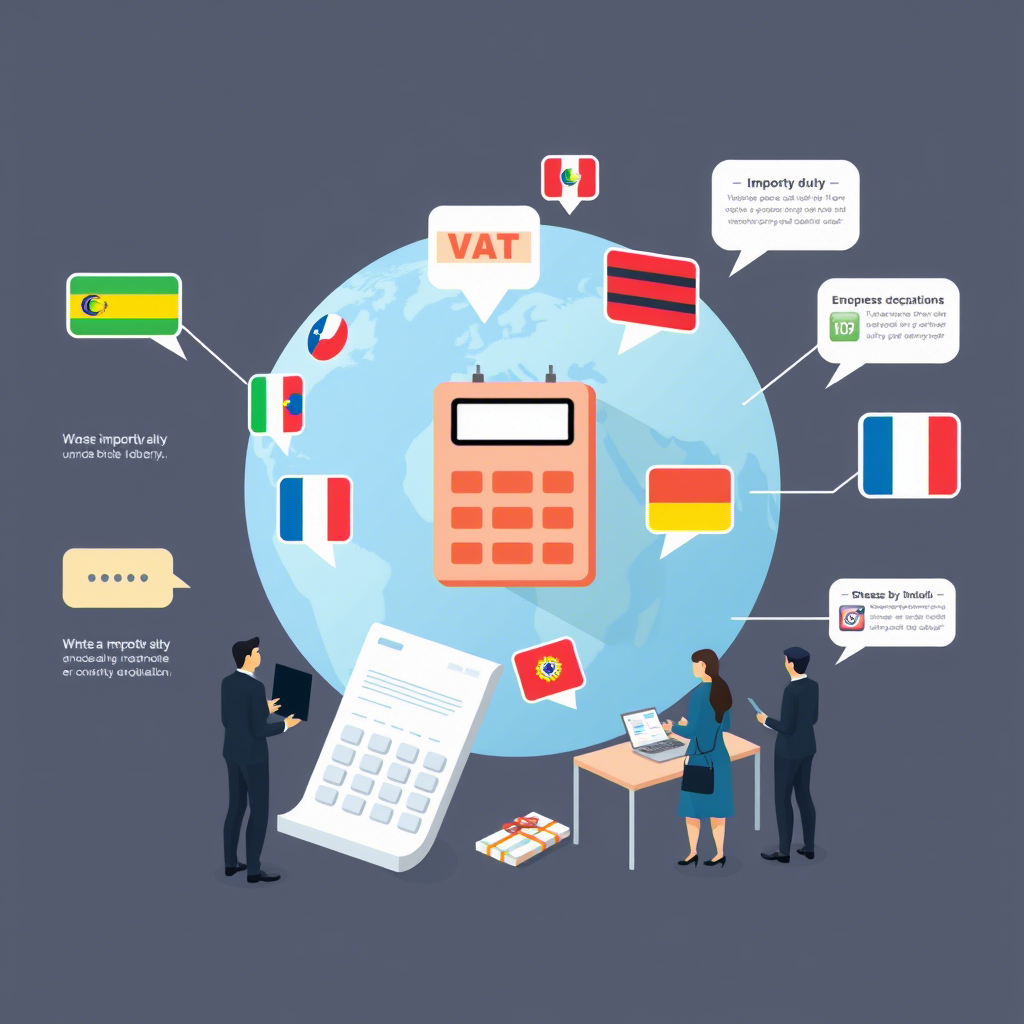
Understanding Tax Obligations for Cross-Border E-Commerce
Understanding Tax Obligations Cross-Border The rise of cross-border e-commerce has opened up global markets for businesses of all sizes. However, selling internationally also comes with complex tax obligations that merchants must navigate to remain compliant. Whether you’re a small online store or a large e-commerce platform, understanding these tax requirements is crucial to avoiding penalties and ensuring smooth operations.
In this blog, we’ll break down the key tax obligations for cross-border e-commerce businesses, including VAT, GST, customs duties, and income tax considerations.
1. Value-Added Tax (VAT) and Goods and Services Tax (GST)
VAT (or GST in some countries) is a consumption tax applied to goods and services sold internationally. The rules vary depending on where you sell and where your customers are located.
Key Considerations:
- EU VAT Rules: If you sell to customers in the European Union (EU), you may need to register for VAT in one or more member states, depending on your sales volume. The One-Stop Shop (OSS) scheme simplifies VAT compliance for businesses selling digital services and goods within the EU.
- UK VAT: Post-Brexit, UK sellers must comply with both UK and EU VAT rules when selling across borders.
- U.S. Sales Tax: In the U.S., sales tax is state-specific. If you have a physical presence (nexus) in a state, you must collect and remit sales tax. Some states also impose economic nexus laws based on sales revenue or transaction volume.
- GST in Australia, Canada, and New Zealand: These countries impose GST on imported goods, and e-commerce sellers may need to register and collect GST if they exceed certain thresholds.
Action Steps:
✔ Check VAT/GST registration thresholds in your target markets.
✔ Use automated tax software (like Avalara, TaxJar, or Quaderno) to handle calculations.
✔ Consider using the IOSS (Import One-Stop Shop) for EU sales under €150 to simplify VAT collection.
2. Customs Duties and Import Taxes
When shipping physical goods internationally, customs duties and import taxes may apply. These are typically paid by the buyer but can affect pricing and delivery times.
Key Considerations:
- De Minimis Thresholds: Many countries have a minimum value (e.g., €150 in the EU, $800 in the U.S.) below which no duties are charged.
- Duty Calculation: Duties depend on the product type, value, and origin. Incorrect classification can lead to delays or fines.
- DDP (Delivered Duty Paid) vs. DDU (Delivered Duty Unpaid):
- DDP: Seller covers all import fees (better customer experience but higher costs).
- DDU: Buyer pays fees upon delivery (can lead to cart abandonment).
Action Steps:
✔ Clearly communicate potential duties to customers at checkout.
✔ Use HS (Harmonized System) codes correctly to classify products.
✔ Partner with a customs broker for high-volume shipments.
3. Income Tax Obligations for Cross-Border Sellers
E-commerce income may be taxable in multiple jurisdictions, depending on where your business operates.
Key Considerations:
- Permanent Establishment (PE) Risk: If you have warehouses, employees, or subsidiaries abroad, you may trigger corporate tax obligations in that country.
- Double Taxation Treaties: Many countries have agreements to prevent being taxed twice on the same income.
- Transfer Pricing: If you sell through subsidiaries, ensure intercompany transactions follow fair market value rules.
Action Steps:
✔ Consult a tax advisor to determine tax liabilities in each market.
✔ Keep detailed records of international transactions.
✔ Consider structuring your business through tax-efficient entities (e.g., an LLC for U.S. sellers or an EU-based company for European sales).
4. Digital Services Taxes (DST) and Platform Liabilities
Some countries impose special taxes on digital services:
- France, Italy, and the UK have DSTs targeting large tech companies.
- Marketplace Facilitator Laws (e.g., Amazon, eBay) require platforms to collect and remit taxes in some regions.
Action Steps:
✔ Check if your platform automatically handles tax collection.
✔ Monitor new digital tax laws in countries where you operate.
Conclusion: Staying Compliant in Cross-Border E-Commerce
Tax compliance in cross-border e-commerce is complex but manageable with the right approach:
✅ Register for VAT/GST where required.
✅ Understand customs duties and optimize shipping strategies.
✅ Track income tax obligations in all operating countries.
✅ Leverage automation tools to simplify tax calculations and filings.
By staying informed and proactive, e-commerce businesses can expand globally while minimizing tax risks.
Need help? Consult a tax professional or use e-commerce tax software to ensure compliance as you scale!
Would you like a downloadable checklist for cross-border e-commerce taxes? Let us know in the comments! 🚀
Ecommerce #TaxCompliance #CrossBorder #VAT #GST #OnlineBusiness
https://s.click.aliexpress.com/e/_ExI88Bk
Discover more from Book Store
Subscribe to get the latest posts sent to your email.
